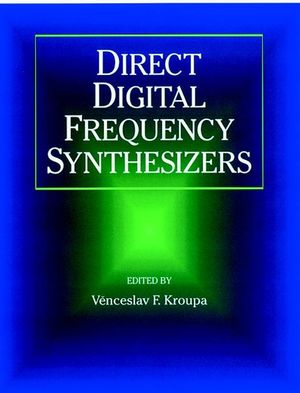Direct Digital Frequency SynthesizersISBN: 978-0-7803-3438-0
Paperback
400 pages
November 1998, Wiley-IEEE Press
 This is a Print-on-Demand title. It will be printed specifically to fill your order. Please allow an additional 15-20 days delivery time. The book is not returnable.
|
||||||
With the advent of integrated circuits (IC), digital systems havebecome widely used in modern electronic devices, includingcommunications and measurement equipment. Direct Digital FrequencySynthesizers (DDS) are used in communications as transmitterexciters and local oscillators in receivers. The advantages aresuperior frequency stability, the same as that of the driving clockoscillator, and short switching times. The difficulties are loweroutput frequencies and rather large spurious signals.
Compiled for practicing engineers who do not have theprerequisite of a specialist's knowledge in Direct DigitalFrequency Synthesizers (DDS), this collection of 40 importantreprinted papers and 9 never-before published contributionspresents a comprehensive introduction to DDS properties and a clearunderstanding of actual devices. The information in this volume canlead to easier computer simulations and improved designs.
Featured topics include:
* Discussion of principles and state of the art of wide-rangeDDS
* Investigation of spurious signals in DDS
* Combination of DDS with Phase Lock Loops (PLL)
* Examination of phase and background 'noise' in DDS
* Introduction to Digital to Analog Conversion (DAC)
* Analysis of mathematics of quasiperiodic omission ofpulses
DDFS can also serve as a textbook for students seeking essentialbackground theory.
Compiled for practicing engineers who do not have theprerequisite of a specialist's knowledge in Direct DigitalFrequency Synthesizers (DDS), this collection of 40 importantreprinted papers and 9 never-before published contributionspresents a comprehensive introduction to DDS properties and a clearunderstanding of actual devices. The information in this volume canlead to easier computer simulations and improved designs.
Featured topics include:
* Discussion of principles and state of the art of wide-rangeDDS
* Investigation of spurious signals in DDS
* Combination of DDS with Phase Lock Loops (PLL)
* Examination of phase and background 'noise' in DDS
* Introduction to Digital to Analog Conversion (DAC)
* Analysis of mathematics of quasiperiodic omission ofpulses
DDFS can also serve as a textbook for students seeking essentialbackground theory.



